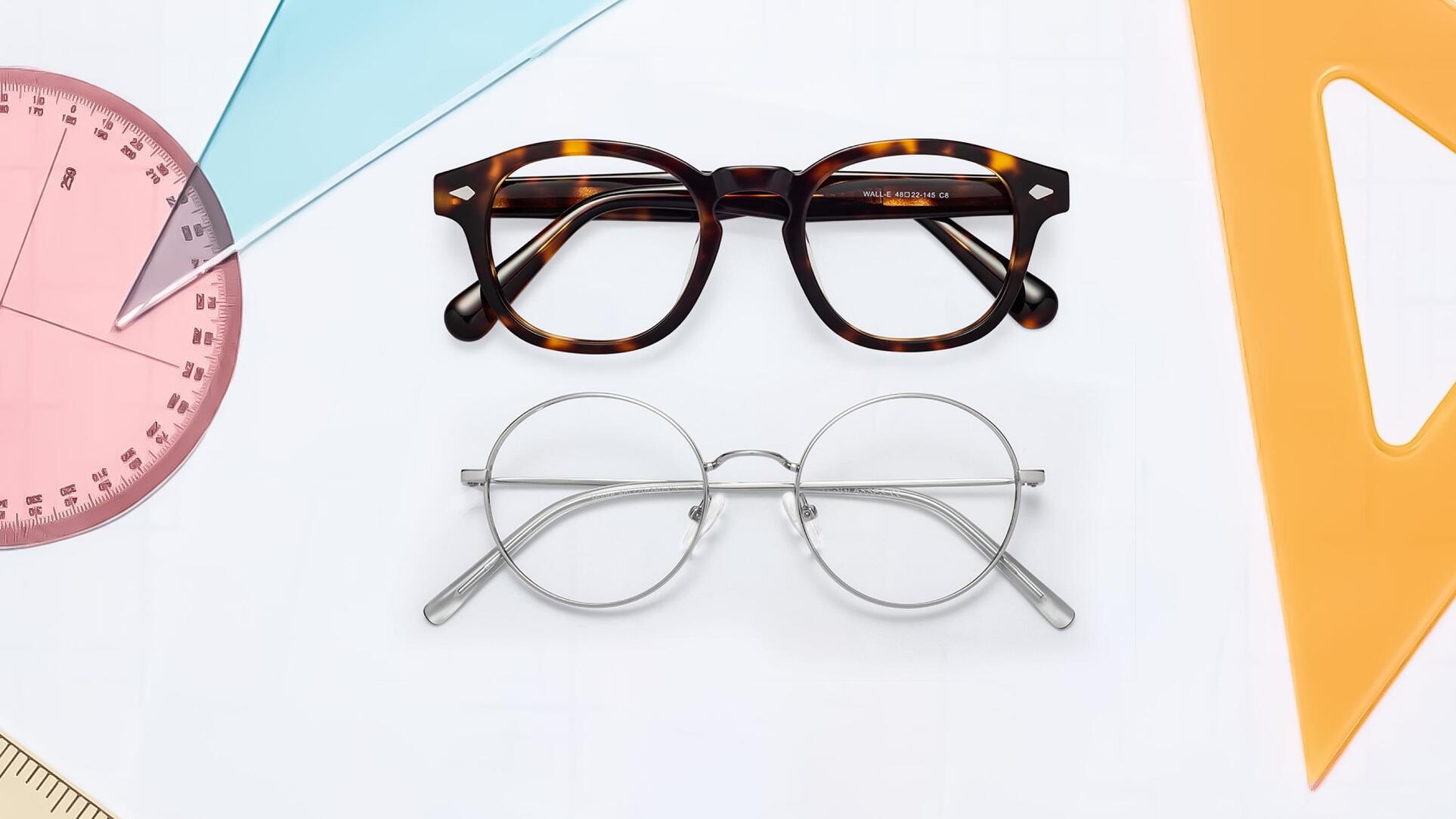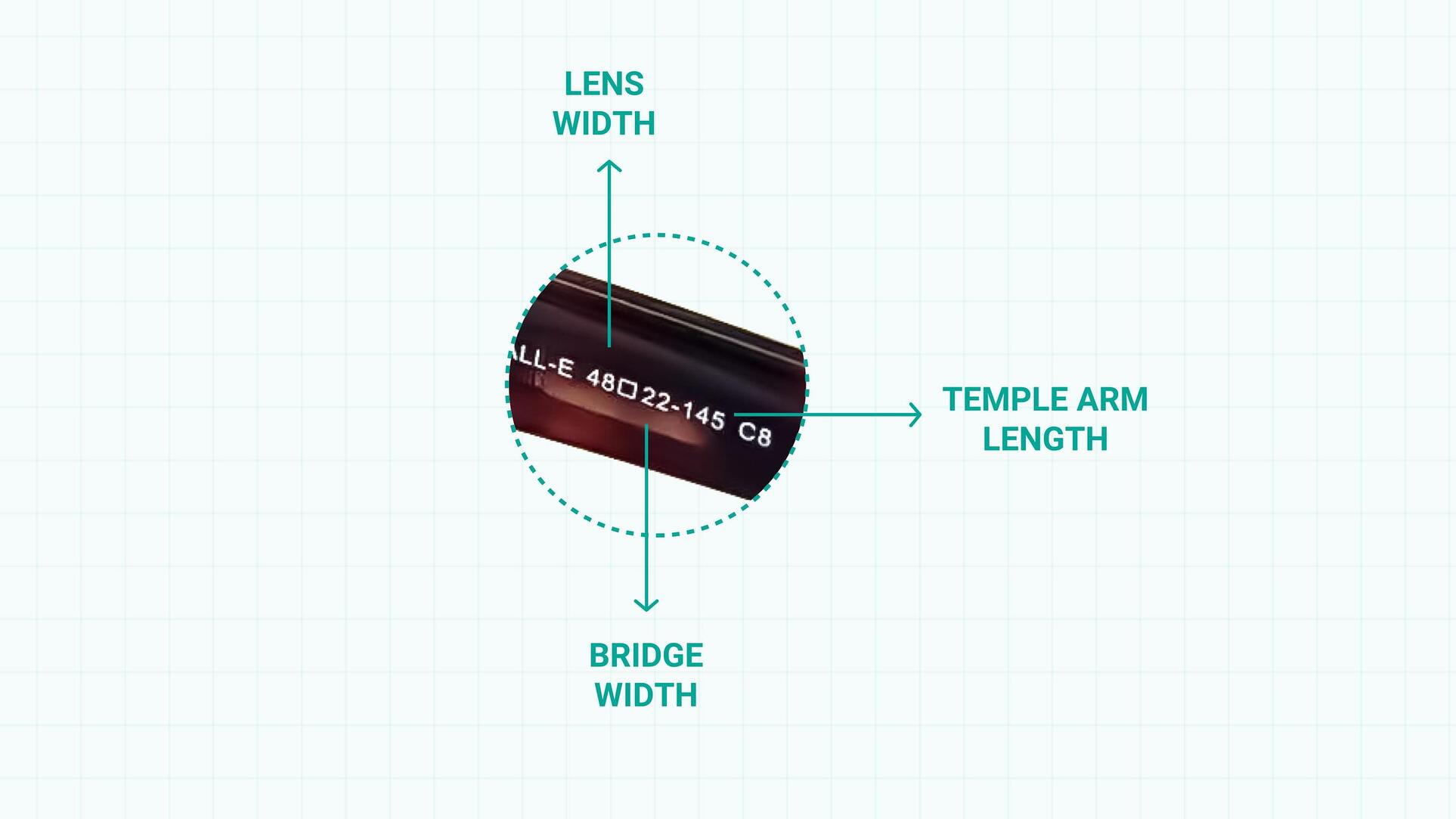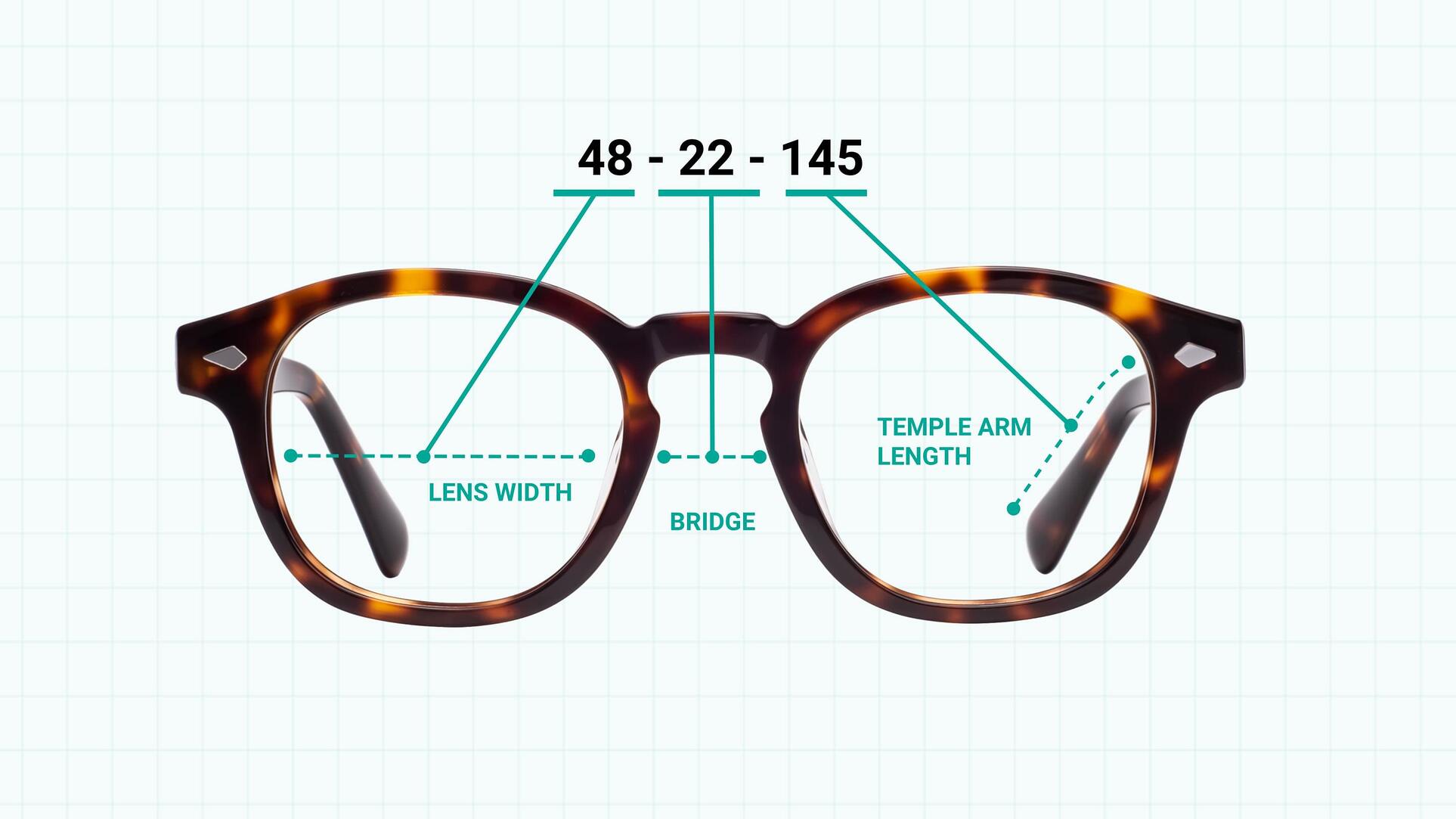
Glasses Measurements: How To Find Your Frame Size
If you have them, take a look along the inside of your eyeglasses. You’ll likely find a series of numbers. These are the measurements of your glasses frames. Along with your eye prescription, glasses measurements are essential to helping you see clearly and comfortably.
In this guide, we cover everything you need to know about glasses measurements and finding the right frame size.
What do the measurement numbers on glasses mean?
The measurements on eyeglass frames tell you the lens width, bridge width, and temple length of your glasses. These three numbers are usually separated by spaces or dashes. Occasionally, you’ll find a little square between the first two numbers.
Lens Width
This will always be the first number in the series. The lens width is the measurement of your lens and is sometimes called “eye size.” Lens width doesn’t include the frame rim that holds your lenses in place.
Lens width is usually between 40 mm and 60 mm.
Bridge Width
The bridge width measures the distance between the two lenses at their shortest. Typically, this is at the top-inside corner of the lenses, right at the bridge piece of your frame.
Bridge width is between 14 mm and 24 mm.
Temple Length
The temple length measures the temple arm – pretty straightforward! This starts from the screw that attaches the temple arm to the rest of the frame and extends to the tip that ends behind your ears.
Temple length is between 120 mm and 150 mm. It most commonly ends in a “0” or “5”.
Other Numbers
Depending on the manufacturer, you may also see some other numbers on the inside of your glasses. These reflect the style or model number of the frames.
Two more important measurements won’t be printed on the temple arm: frame width and lens height. To determine these numbers, you’ll need to get the measurements yourself.
How do you measure glasses at home?
Measure your glasses at home easily by following these simple steps.
Remember: You need to measure in millimeters.

-
Lens Width
Measure horizontally (left to right) at the widest point of the lens. Do not include the rim that holds your lens in place in the measurement.
-
Bridge Width
Measure from the innermost top corner of each lens where the bridge of your eyeglasses is located. For this measurement, remember to measure from lens to lens and include the rim of your frame.
-
Temple Length
Measure from the screw that holds the temple arm in place to the point where the arm curves behind your ear. Next, measure the distance from the curve to the temple arm’s tip. Add these two numbers together to find the temple length.
-
Lens Height
Measure your lenses inside the rim of your frame. This is similar to Lens Width, only this time you’re measuring vertically (i.e., top to bottom).
-
Frame Width
This is the entire width of your glasses frames, including any hinges or decorative pieces that stick out.

What about pupillary distance?
It’s also important to know your pupillary distance when shopping for glasses. Also known as “PD,” this is the distance in millimeters between your two pupils.
Along with your lens width, the PD measurement will ensure that your lenses are correctly positioned, ensuring clear vision.
Checking your pupillary distance is easy! Just use our handy PD measurement tool.
How do you calculate glasses size at home?
If your current glasses fit poorly, or you’re shopping for your first pair of glasses, you may not have a current set of frames to reference.
No worries! Try out these other methods to help you find the perfect fit for a new set of frames.
Use a credit card to find your frame width
Most credit cards are the same size, with the shorter edge measuring 54 mm. Place the card on the middle of your nose, with the short end just under your eye.
If the card:
- Extends past the corner of your eye, narrower frames are right for you.
- Ends near the corner of your eye, medium frames are your best choice.
- Ends before the corner of your eye, wide frames are the option for you.
Know the size of your nose
As you look in the mirror, take note of whether your nose is narrow or wide. This can help you choose the right frame size. A narrow nose suits a narrower bridge on glasses frames. While a wide nose naturally suits a wider bridge.
Use a face shape finder
Knowing your face shape will help you find the frame style that fits you best. For example, round or oval frames compliment people with square faces while oversized lenses tend to look best on people with pear-shaped faces.
Looking for your face shape? Try our free face shape app!
Find your perfect fit at Yesglasses
Whether you’re a glasses newbie or a long-time wearer, Yesglasses has the online tools to help you find the perfect fit. Browse our large collections of frames with tons of materials, shapes, and sizes to pick from.
Need more tips for selecting your specs? Check out our guide to choosing the best prescription glasses.